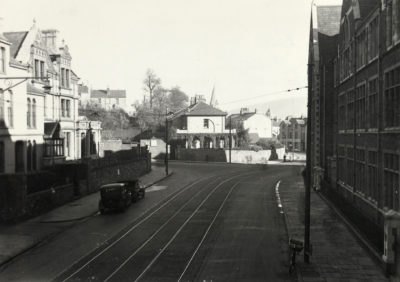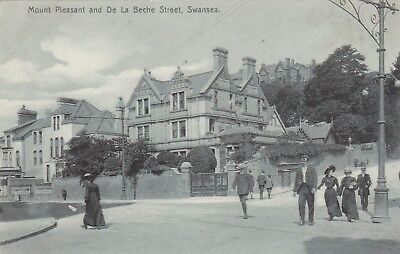Our History

The firm of Rees Richards & Partners originated in 1845 when the Penllergaer Estate owned by Sir John Talbot Dillwyn Llewelyn (1837-1927) appointed Mr W J Rees to act as his bailiff. This was an appointment which allowed W J Rees to control and manage the Penllergaer Estate and all the other lands owned by the Llewelyn family.
 An office was set up, known as The Laurels, at the bottom of Mount Pleasant in Swansea which building was subsequently destroyed by enemy action in 1941, rebuilt as a fire station after the war and subsequently knocked down and rebuilt again as a police station.
An office was set up, known as The Laurels, at the bottom of Mount Pleasant in Swansea which building was subsequently destroyed by enemy action in 1941, rebuilt as a fire station after the war and subsequently knocked down and rebuilt again as a police station.
Sir John Llewelyn was made a Baronet in 1890 and was a well respected landowner and squire being MP for Swansea for 1895-1900, a founder member and first chairman of Glamorgan Cricket Club and Mayor of Swansea. There was a close liaison between Sir John and W J Rees and Sir John used to stay quite often in an apartment above the office at The Laurels as of course travel in those days was not an easy matter.
The firm of W J Rees & Partners continued to act as bailiffs, i.e. exclusively for the Llewelyn family, following its inauguration up until the post war period when the main professional operation of the firm became claims or war damage in Swansea which was virtually obliterated in 1941. The firm continued to mostly act for the family which owned a large proportion of Swansea but also began acting for other injured parties following the war damage and as a result began to expand its operations away from solely acting as bailiffs.
Edward Rhys Richards became a partner in the firm in 1936 and carried out almost exclusively himself the war damage claims which were extensive and difficult. You may recall that there were three towns in Great Britain which were affected badly by enemy action and those were Coventry, Plymouth and Swansea and these three towns were referred to in the War Damage Act and had declaratory areas wherein the local authority could buy out the damaged property in 1947 at 1939 values. This was, at the time, considered to be appropriate by central Government although of course private landowners were severely financially injured.

E R Richards’ son, D E K Richards, having carried out his National Service in 1953-1955, was given no opportunity other than to become the “office boy” in the firm at their new office at Druslyn House that was formerly the family’s doctors surgery. This period was quite amusing as article pupils were the fashion and many of the article pupils were men who had served in the war but needed to start a professional education. There were four in all, two of whom were Captains in the army, one was a Sub Left Tenant in the Royal Navy and finally the smallest one was a Squadron Leader in the RAF. It was difficult for the partners at that time to control these men as they were of high spirit and not used to taking orders, however, it is pleasing to report that all four of them became very successful professional or business men and lived a full life.

